The anti-Israel demonstrations, camps, and building take-overs have drawn much support and criticism. Either celebrated as modern-day civil rights fighters or demonized as Jew hating terrorist supporters, the accolades and accusations have been flying around with abandon. It is not my intention to give my opinion of what the protesters are saying, but rather, how.
.
There are few things as grating and tiresome as the petulance of youth. The demands and concerns of a child might even be entirely reasonable but the shrill whining can ring out every ounce of sympathy one might have. To borrow a phrase when the worst are full of passionate intensity…well their behavior is rarely more sophisticated than the toddler throwing a tantrum in the supermarket. And often exactly the same: lying on the ground screaming; throwing food (be it your kitchen wall or the Mona Lisa); calling names; and resorting to hyperbole. All and all the ethos that breeds this kind of behavior is the last place one might look for art.
Whereas protests commonly have the ethos of a toddler, the aesthetics are pure high school pep-rally from hell. The Hey-Hey Ho-Hos or go-team-gos. A repeated rhyme doesn’t equal an argument; stop any wars; or win any football games. The droning chants strictly invigorate the true believer, to the outsider they have all the appeal of a fork in the garbage disposal. Taunting the opposite team could get you suspended. Both groups, the adolescents and the protesters (but I repeat myself) also make use of hand written signs with equally uninspired insipid sentiments. The aesthetics of the protest rarely ever rise above the rebarbative. And that is one of my main gripes, these things are so damned ugly.
It is rare, but some protest material, however, can rise to the level of art.
Avram Finkelstein, Jorge Socarras, Chris Lione, Charles Kreloff, Oliver Johnston, and Brian Howard, Silence=Death.1987
The Silence=Death posters come to mind. In the nineteen eighties President Reagan was famously taciturn in regard to the AIDS crisis. In what was essentially an advertising campaign (using the same stark punchy imagery of an ad), the group of artists that designed the poster drove home a simple point, AIDS needs to be addressed. This image is so simple and effective that it loses nothing with the passage of time. The designers of the Silence=Death Project understood what Leonardo said, “simplicity is the ultimate sophistication.”
Barbara Kruger employs a similar graphic tactic to make her statements. Her Untitled (Your Body is a Battleground) was employed as an emblem of the pro-choice movement.
Barbara Kruger, Untitled.1989
Her aesthetic is so distinctive and unique that it is immediately recognizable as hers. Her brand employs succinct and provocative language in conjunction with her striking design in what amounts to a one-two-punch pronouncement. Barbara Kruger is an incredibly celebrated artist and this work is seen as a major piece in the oeuvre of such an artist. But artists don’t hold a monopoly on effective vehicles for protest.
Although I don’t think they were ever intended as art, or designed by someone considering themselves an artist, what was first used by the Memphis Sanitation Workers Strike, the I AM A MAN placards have such force that it has become one of the most important icons of the twentieth century. Once again, the aesthetics and sentiment is simplicity itself; a four word phrase and a stark design. The declarative statement voices the resilience, dignity and hope that was the governing spirit of the civil-rights protest. This sign doesn't attack, it affirms; it doesn’t accuse, it makes a statement. The young people who are striving to be seen as the spiritual progeny of these dignified protesters would do well to remember this principle.
I AM A MAN is impossible to argue with, and so too, all that the statement entails: I am a man, and I should be treated like one. Although this might be seen as a piece of graphic design, it can’t be dismissed or lessened by any such designation. It is so effective that it renders any such quibbles that a viewer would carry completely silent.
Faith Ringgold, United States of Attica.1971
The art world, and indeed our country, has lost a significant voice. Faith Ringgold passed away last week. At ninety three, she had seen America through generations of struggle. Her artwork not only recorded much of this struggle, it also sought to rectify the wrongs she was confronted with as a Black woman in America. Ringgold was indeed active in protest movements. Most notably to open the museum to Black artists; and when that seemed to leave out the women, she worked on that inequality.
Faith Ringgold, The American People Series #20: Die. 1967
Her art of the late sixties had much of the qualities of the art spoken above. It was graphic, unequivocal, and challenging. In her United States of Attica, Ringgold renders the map of the United States in Marcus Garvey’s Pan-African colors; on the map is written a litany of acts of violence committed in or by the country. This piece voices Ringgold’s disaffection with the country of her birth through a visual argument, a graphic indictment with a lawyer's unassuming frankness. The poster is a statement made with considered affect and blood in the eye.
Faith Ringgold, The Sunflower Quilting Bee at Arles. 1997
Ringgold’s 1967 painting American People Series #20: Die depicts a world gone mad. It is commonly seen as a sort of companion piece to Picasso’s Guernica. Whereas United States of Attica was cool and restrained, this painting is a depiction of the insane world that the poster (Attica) only referred to. Ringgold is so effective at getting her point across that these, as well as much of her civil-rights era work, make their viewer completely uncomfortable. And that is the point. She finds her voice and speaks with precision and force. As powerful as these pieces are, and as much as I appreciate them for what they are (some of the most evocative art of their era), it is her later work where Ringgold transcends into greatness.
Faith Ringgold, Mahalia We Love You.2011
In the early seventies Ringgold started employing quilting in her work. Commonly denigrated as a “craft” Ringgold chose to celebrate this previously dismissed medium. Ringgold honors what was once seen as “lower” “woman’s art” and shows how great that thing is and how great women are. The imagery she uses is also celebratory. Black people, famous and normal, are depicted as heroic and beautiful. In the work of the last fifty years, she turns her attention from the ugliness of the world to its glory. These pieces of art are glorious and triumphant, they are full of the spirit of verve that refuses to be repressed. It is through affirmation that Ringgold makes her most substantial statements.
Erich Fromm once wrote that “True compassion and knowledge of man has been largely underrated as a revolutionary factor in the development of man, just as art has been.” Anger and enmity rarely change minds. If one is interested in changing minds one might consider how you are saying what you're saying. Consider aesthetics. Invective on high volume might feel good, but it incites a mirrored response, or worse, dismissive apathy-death for the would be revolutionary. A screaming, spittle-spewing mouth rarely finds a willing ear. Is shouting hate and allegations ever persuasive? The would-be revolutionary might be right or might be wrong, but if catharsis and hyping up your crowd is all that matters, not changing minds, the revolution that you will inspire may become much darker than anyone could imagine.

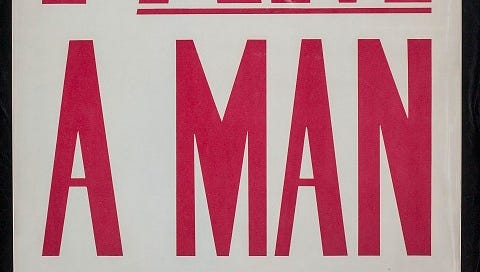



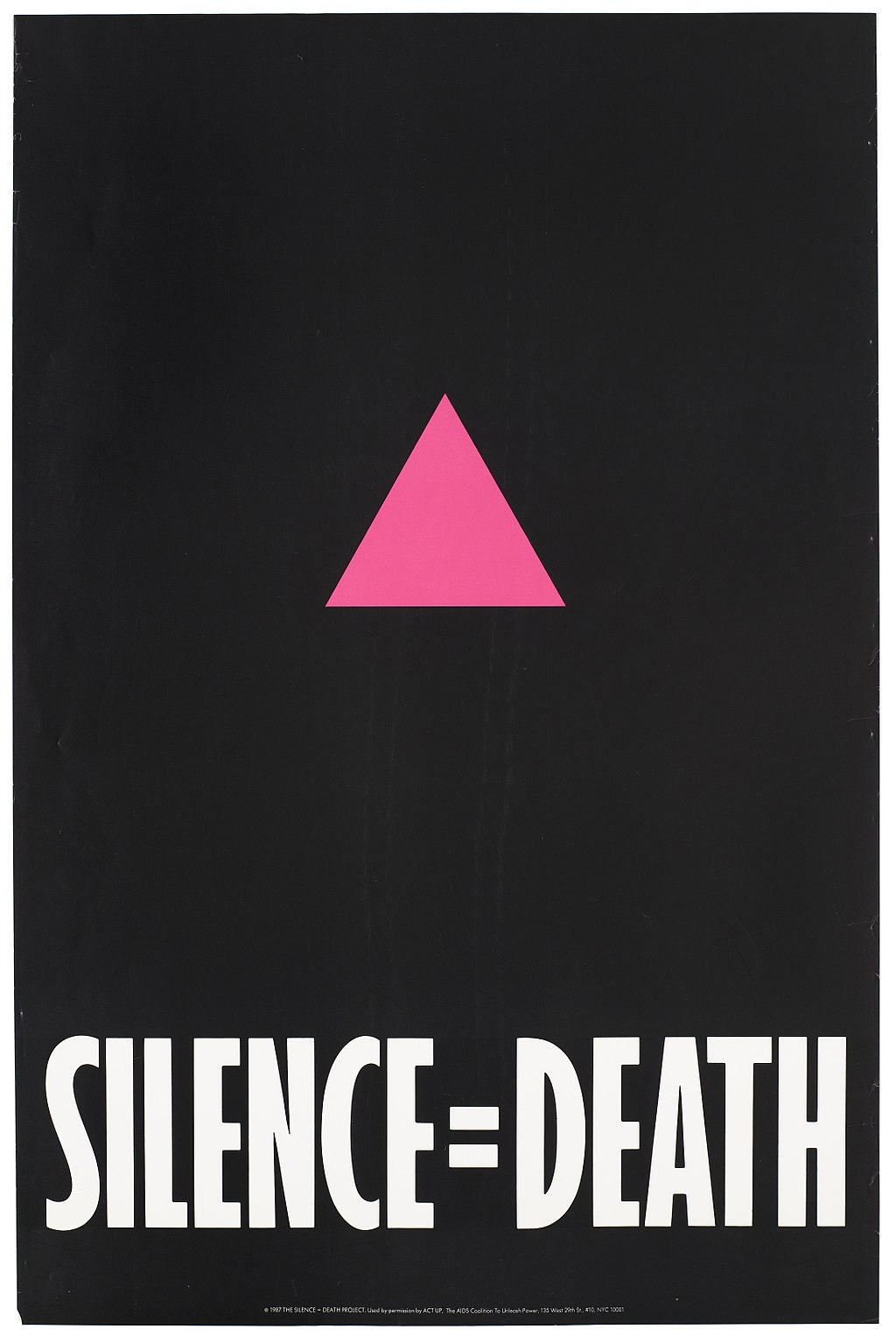


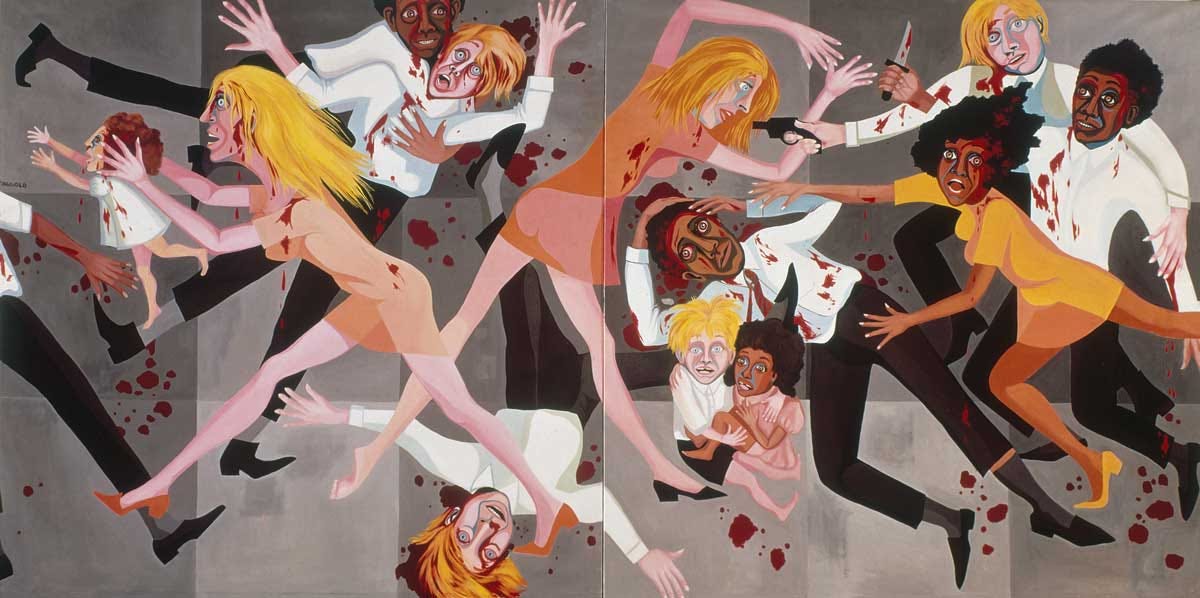
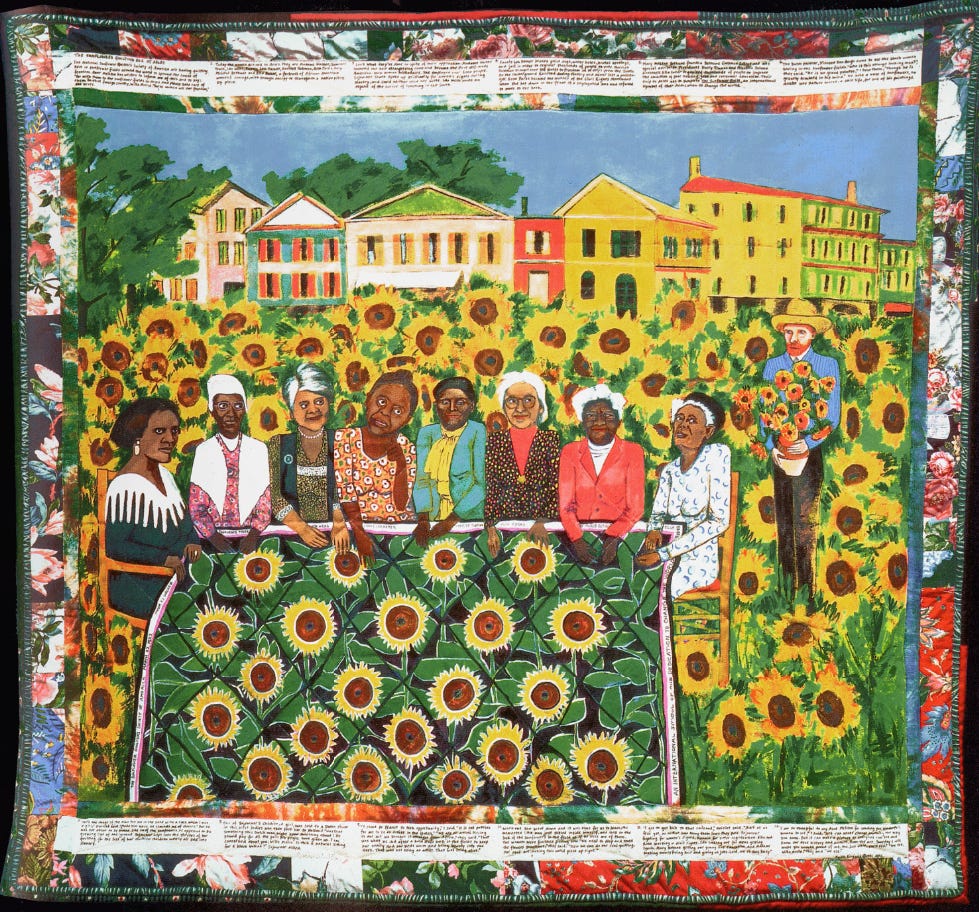
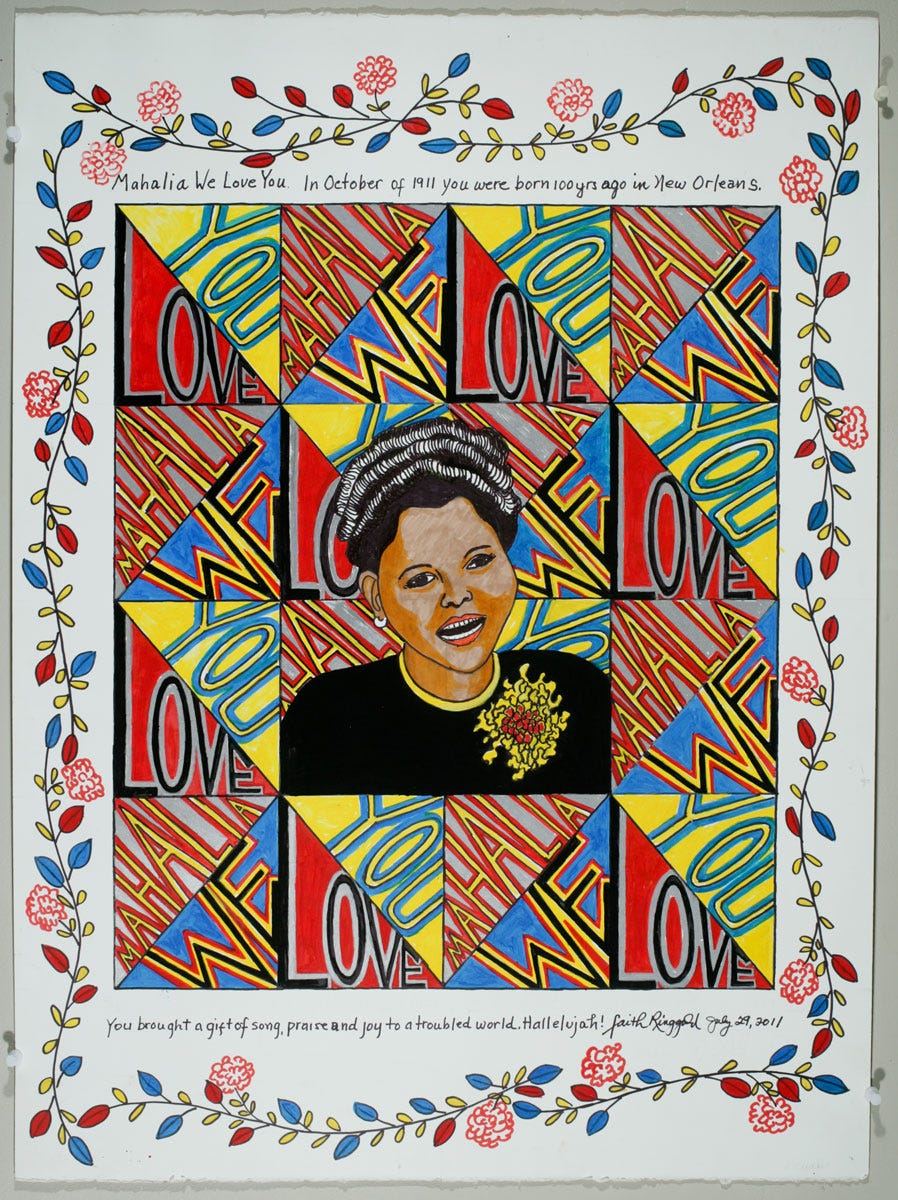
Nice piece, Mason. Very thought-provoking and well-written.
I think Norm Finkelstein tried to convey a similar message, ironically, while addressing a pep rally at a Columbia University. Not surprisingly, I think his advise fell largely on deaf ears.
https://www.youtube.com/watch?v=GWX-Cpk94PQ
I suppose we could hope for more civility and less ugliness, but if not, maybe just laughing at it is best.
“If you can’t laugh at the world, you’re through.”
- Ben Sidran
“Be serious at your own risk.”
https://www.youtube.com/watch?v=h6G3ka3lfjI
This is an extraordinary piece of writing and thought provoking piece of “written art”. The drawn parallels between the zeitgeist of the time, the protest, and storied art or banners of protest signs and art, as I might call them, has stimulated my thoughts like no other. Thank you.